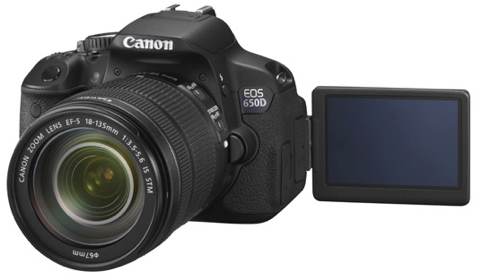 Digital Photography Digital took over from film cameras many years ago now. Some people still like film, and there are still a few companies around that can process it, but there's little reason to use it any more. Of course, film still has its fans just like vinyl does for music, but digital is moe convenient, much cheaper, and usually gives better results. In fact, because I always have it with me, I actually take more photos on my iPhone than I do on my digital SLR. Smartphone cameras have come a long way but they still can't match a real camera for speed, flexibility, and image quality. But remember the photographer's adage: the best camera is the one you have with you when you need it! My current digital camera is a 20 megapixel Canon EOS70D which rerpleaces an 18 megapixel Canon EOS 650D digital SLR. It is fast and accurate, has excellent low light performance, a high definition movie mode, live preview, lots of metering and other modes, a high resolution rotating touch screen, and has easy to use controls.  The Canon EOS-650D digital SLR showing its flip-out and rotating touch screen which is a very useful feature when taking photos at awkward angles. Before that I had a 15 megapixel Canon EOS 500D digital SLR which was a similar camera with a few less pixels, inferior low-light performance, a standard screen, and a few less features. Before the 500D I had an earlier Canon SLR, the 350D, which only had about half the pixels, no movie mode or live preview, inferior low light performance, and no real spot metering. It was still an excellent, reliable camera though, and I took over 10,000 photos with it. Before the dSLRs I had a compact digital, the 7.1 megapixel Canon Powershot G6. It was a good compromise at the time, with reasonable compactness, size, and general capabilities. Without interchangeable lenses it lacked a bit of flexibility and it was much slower than the dSLRs I have had since, but I took a few good photos with it. Before the Canon I had a Sony DSC-P92. The Sony took 5 megapixel photos and had 3x optical zoom. The lens was of moderate quality and the CCD quality was quite good. The controls were very good - it was really quick to skip into any mode and switch options on and off. I changed metering and used manual focus a lot on this camera. The best feature was the spot metering which I used most of the time. It also took good short movies with sound in MPEG format. With just a 128MB card there was only room for a few minutes at high quality though. Before the Sony I had a Nikon Coolpix 885, which was a 3.3 megapixel camera. The Nikon was definitely not as good as I expected. The quality of the lens and especially the poor performance of the CCD was very disappointing. Also, the user interface was horrible. I'm sure Nikon make some fine cameras but I'll never buy one again. On the other hand, I did take around 5000 photos with it and, after a bit of repair in Photoshop, many of them were quite good. Advice on Choosing Cameras Most compact digital cameras don't have interchangeable lenses, and digital SLRs with interchangeable lenses are more expensive, bit its still important to buy a camera with a good lens. Sony's better cameras use Zeiss lenses and Panasonic now use Leica, so this is a very encouraging sign. Even cheaper lenses generally do a good job in most situations but you might notice problems in extreme lighting situations, etc. Generally its not so important to get more pixels. A good 12 megapixel camera will be heaps better than a poor 20 megapixel camera, for example. Digital zoom is also highly over-rated. In fact, its almost useless if you do any processing of your photos on a computer because you can often zoom in better using an image editing program (such as Photoshop) than your camera can. Processing the Pictures Once I get the pictures onto my computer I process every one of them using Pixelmator Pro (previously I used Pixelmator, and before that Photoshop). Common improvements I make are cropping, rotation, contrast, colour cast, and sharpening. I also keep the original in case the processing alters the original too much. In fact, when I take a photo I assume I'm going to crop it and frame it so that a bit more than I really want is in the frame. You can take part of the frame away but you can't add something that isn't there, so you are better to take a photo with too wide a view than too narrow.
| ||||||||||||||||||||||||||||||||||